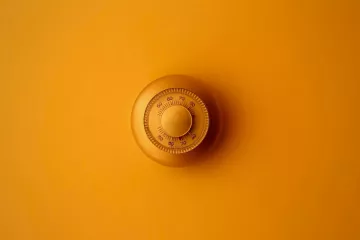Additive Manufacturing: Sensors in the 3D Printing industry
Additive Manufacturing definition and the different AM processes
Additive manufacturing is the process of producing physical subjects layer by layer based on Computer Aided Data (CAD); it is also commonly referred to as 3D printing or layered manufacturing.
There are obvious upsides to additive manufacturing, however if we were to identify the main one, it would be the possibility to produce components without using tools and mould, while still keeping the necessary precision. The general process of the AM is that each additional layer is a melted/partially melted component that bonds to the previous layer based on the software instructions. These instructions are defined digitally through CAD. The pointing part of the machine can present itself as a nozzle laser, an electron beam, etc. When the components are cured and cooled down, they finally are bonded together framing the 3D object that was “ordered” by the software.
The main branches of Additive Manufacturing can be narrowed down to four:
- BINDER JETTING: in this AM method an industrial printhead specifically produces and distributes a liquid binding material onto metal, sand, ceramics or composites particles that are essentially a thin layer of powder. This process continues layer by layer until the digitally-ordered object is complete
- POWDER BED FUSION (PBF): in this method of AM variety of electron beams, lasers and thermal printing heads are used to partially or fully melt precise layers of a material in a 3D space: some of these methods are direct metal laser melting (DMLM), selective heat sintering (SHS), selective laser sintering (SLS), direct metal laser sintering (DMLS), electron beam melting (EBM), etc.
- MATERIAL EXTRUSION: Spooled material is heated and extracted through a nozzle which is mounted on a moving arm. The overall bed moves vertically while the nozzle moves only horizontally, once again this method as well is layering a material which after precise temperature control, through adhesion bond together
- DIRECT ENERGY DEPOSITION (DED): this method as well as the material extrusion one goes through a similar process, however it is more applicable for a wider variety of materials like ceramics, polymers, and even metals.
Other methods include Vat Polymerisation (using a vet of liquid resin), Sheet Lamination, Wire arc AM (using an arc welding power source), etc. Some of the known technologies are the Direct Material Laser Sintering DMLM & EBM, Stereolithograhy (photopolymerization used to print ceramics with a UV laser).
The wide adaptability of 3D printing comes from the ease of use and physical manipulation, weight and size benefits of the materials used in AM: There are vast variety of these materials, however we can categorise these into Thermoplastics, Ceramics and Biochemicals:
- Thermoplastics: The most popular elements in the industry as the known versions offer distinct advantages in the specific applications. A clear honourable mention here is PEEK, which is a polyetheretherketone, a semi-crystalline engineering thermoplastic providing high-performance, high resistance to harsh chemical environments, law moisture uptake, etc.
- Ceramics: Be it tricalcium phosphate, alumina or zirconia these are widely used in AM often being considered as creating a unique new class of glass products
- Biochemicals: vastly demanded in healthcare applications the sub materials in this group of ED printing materials are silicon, calcium phosphate, zinc commonly used to fix up the bone structure as the new bone us bonding.
- Concrete: There has been impressive innovations and rapid development in concrete 3D printing – from large scale construction projects, to development of 3D printers with more nimble and intricate concrete 3D printing capacities.
Applications and Technologies of Additive manufacturing
AEROSPACE One of the earliest adopters of AM, mainly due to the lighter parts AM produces was the Aerospace industry (the possibilities to produce complex geometric objects and eventually lettuce structures to increase the lightweight aerodynamics was an important aspect as well).
AUTOMOTIVE Alike the aerospace industry, most automotive products are also subjected to harsh environmental conditions. The possibility to manufacture high quality, complex and durable materials in the pace that AM allows, enables the much demanded rapid innovation in the industry. Be it aluminium alloys used to manufacture exhaust parts, or the 3D printed parts used by McLaren for their Formula 1 cars.
MEDICAL From 3D printed dental appliances, all the way to custom, 3D printed surgical implants manufactured on-demand to help patients suffering from bone cancer – Additive Manufacturing has brought major innovation and positive change in the medical industry. The innovation is ongoing, with the printing of human embryonic stem cells as one of the latest breakthroughs to help replace burned or damaged skin.
INDUSTRIAL MANUFACTURING This surely includes Civil Engineering (like the world’s first 3D-printed bridge in the Netherlands), as well as the industrial, environmentally-friendly components that can withstand harsh condition be it within the energy industry, rotary equipment, etc.The clear achievement of once unimaginable physical designs, dictated by the digital entity allows to unleash new creative potentials of the designers in the sector.
IN-HOUSE MANUFACTURING 3D printing is becoming portable thus more and more accessible to end users. Be it a designer looking for a quick prototype or a small business owner – the 3D printers are becoming rather relevant and easy-to-use tools, creating a pathway for wider integration of Additive Manufacturing in everyday life.
CUSTOMIZATION FOR THE CONSUMER the possibilities of 3D printing for automation, and custom creation of physical products, even ones with complex structures – has brought a large step forward in mass production: a customer-specified size, design and other characteristics can now be ordered and processed by high-end brands like Adidas, who announced a line of shoes called FutureCraft 4D already in 2018. This advancement of 3D printed consumer products are also trendy in jewelries, smart wearables, in the cinematic universes for special effects, art, audio products and many more.
Sensors and 3D printing
Sensors are the widely adopted, integral part of the 3D printing industry, especially when it comes to the manufacturing of components for robotics, biomedical, aerospace and other applications. In this context of precision – the sensors are used in the AM machines – to ensure the expected processes or to eventually become part of the manufactured components (there are, of course, sensors that are manufactured in a 3D printing process themselves).
The more widely used sensors are temperature, strain, environmental, wearable, biosensors, etc. In terms of the sensors created in an AM process, the main advantage here is the 3D printing tech brings a volume of saved labour, compared to other conventional methods of manufacturing. Let us list some of the noticeable applications of sensors within AM:
- Automatic Bed Levelling (ABL) is an increasingly valued feature of 3D printers which ensures the precise levelling between the nozzle and the changes of the build plate;
- Continuous control of flow and pressure through the nozzle;
- Continuous control of the “arm” to ensure the precise, layer-by-layer printing;
- Structural integrity ensured by pressure control (neither more, nor less amount of welding and material distribution should be performed over the previous layer).
Surely these tasks of precision require continuous knowledge on the distance, pressure, temperature and other physical quantities which can be gathered thanks to sensors. – Commonly used sensors in this regard are: Hall-effect sensors, Capacitive sensors, Inductive sensors, Thermistors, RTDs, Thermocouple, FBGs, MEMS, etc.
Placing sensors within 3D printed materials is able to provide an enormous advantage to the material, essentially making them smart as they are responsive to a set of physical quantities.
This narrative is being widely explored, the Swiss Centre for Electronics and Microtechnology(CSEM) being a fresh example with their active exploration manufacturing sub-millimetre elements and particles like sensors, actuators, electrical/fluid feedthroughs, to be embedded into 3 dimensional objects.
We, at RVmagnetics are very motivated by the future that the Additive Manufacturing holds as well, especially in combination with the relevant sensor technology. Our inspiration comes from our own MicroWire. It is an elastic, few centimetres sensor with a diameter of 3–70µm, not affected by harsh chemical or electromagnetic environments around it, and most importantly for its AM industry applications, it is a passive sensor able to provide real-time contactless measurements from up to 10cm, through almost any material!
Placing a MicroWire sensor into a product during the 3D printing can be an easy and a seamless part of the overall operation, while adding an intelligence to the object. The information that can be obtained from the MicroWire sensor during and/or after the 3D printing of the material is of physical quantities such as temperature, pressure, bending, torque, position, all in the real-time while Predictive maintenance the next higher echelon of the 3D printing and sensors intelligent coalescence.
3D printing provides an unparalleled opportunity for seamless MicroWire sensor integration, without needing to change the design or process of manufacturing. Retrieving data from your 3D printed product, spare part, material or from monitoring of the process as such ultimately makes them smart.
What are the main value additions of a MicroWire compared to a standard 3D printed structure?
- Seamlessly integrated multifunctional sensor, making the materials smart
- No structural or design defects due to the miniature size of the wire
- Possibility to provide real-time data through almost any material, making it possible to have a Smart Product, Smart Part of the Product, Smart material of the Product,
- The smartification is not only of the material (throughout the lifetime of it), but also of the additive manufacturing process of the material: in other words MicroWire can combine 3D printing process control with Structural Health Monitoring.
Surely the accuracy, resolution, repeatability, calibration and many more aspects of the conventional sensors need further development, however the potential return on this investment (even though specific per company) is evident.



